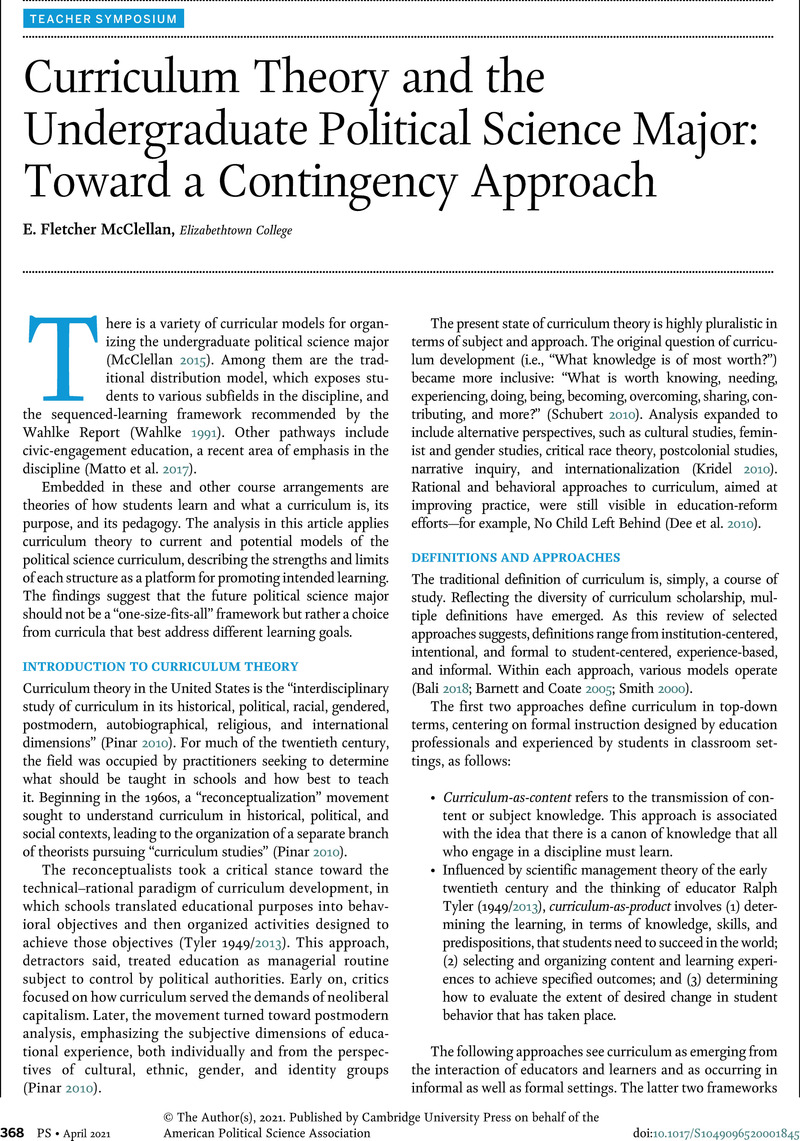Crossref Citations
This article has been cited by the following publications. This list is generated based on data provided by Crossref.
Hassan, Mehboob Ul
and
Akbar, Rafaqat Ali
2021.
UNMASKING THE EFFECTS OF TEACHERS WHISTLEBLOWING SOME ATTRIBUTES ON IMPLEMENTING STEM EDUCATION: NATIONAL CURRICULUM DOCUMENT 2006 PERSPECTIVE.
Humanities & Social Sciences Reviews,
Vol. 9,
Issue. 3,
p.
564.
McClellan, E. Fletcher
Kopko, Kyle C.
and
Hafler, Amanda
2023.
Giving It the Old College Try: Academic Departments and Undergraduate Curriculum Change in Political Science, 2009–2019.
Journal of Political Science Education,
Vol. 19,
Issue. 4,
p.
580.
Plencner, Joshua
and
Rank, Allison
2024.
Curricular Design, American Political Development, and the Future of the Undergraduate Political Science Major.
Journal of Political Science Education,
p.
1.



